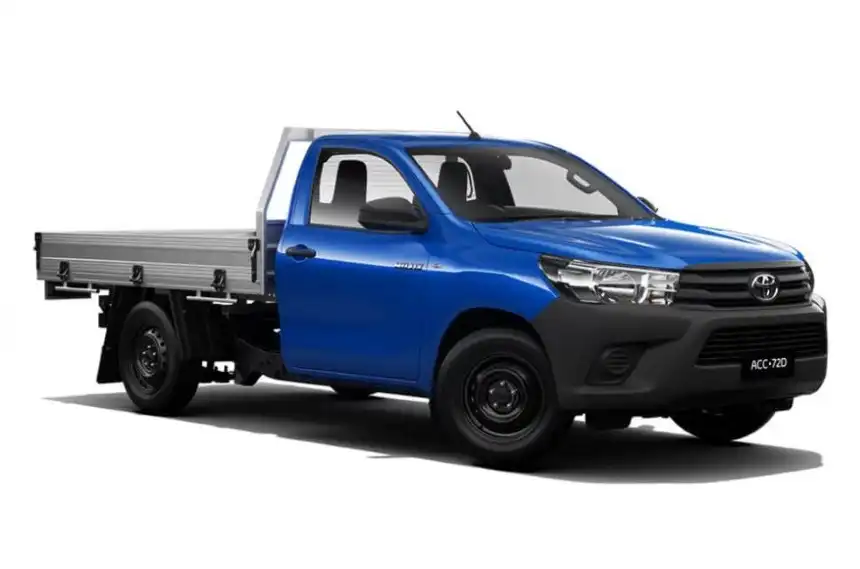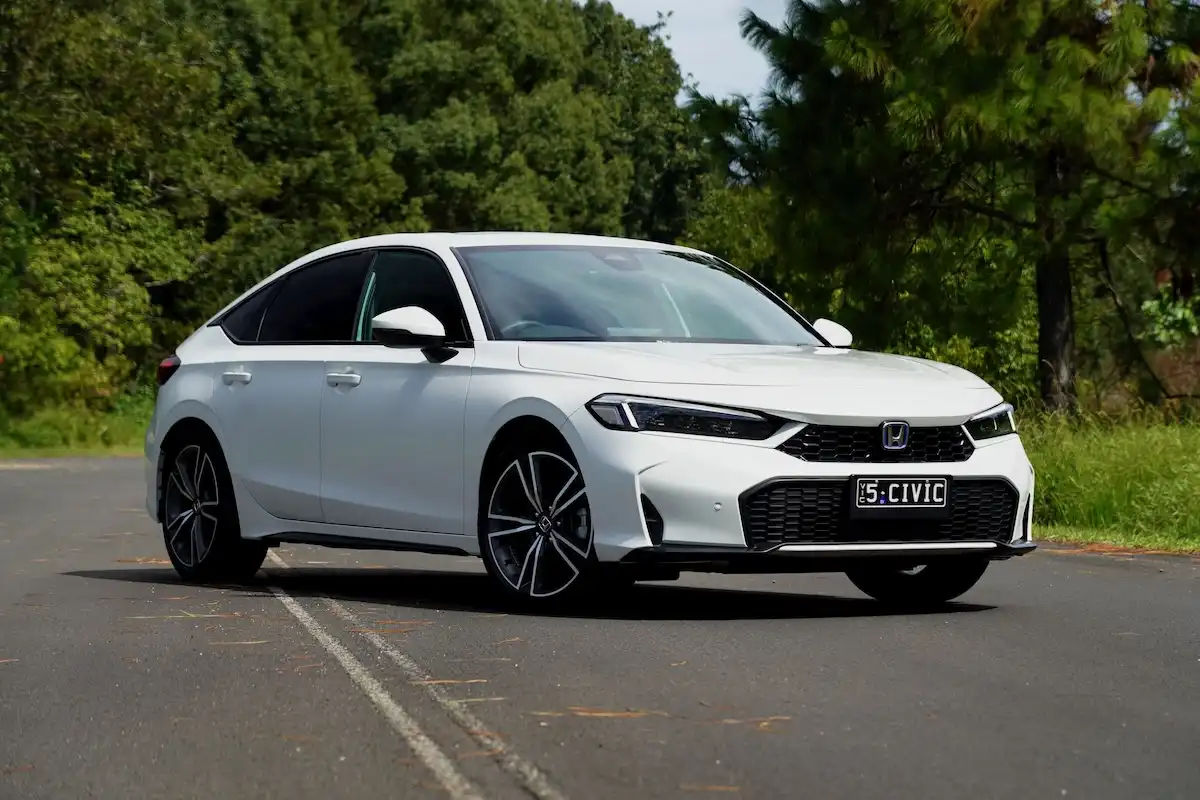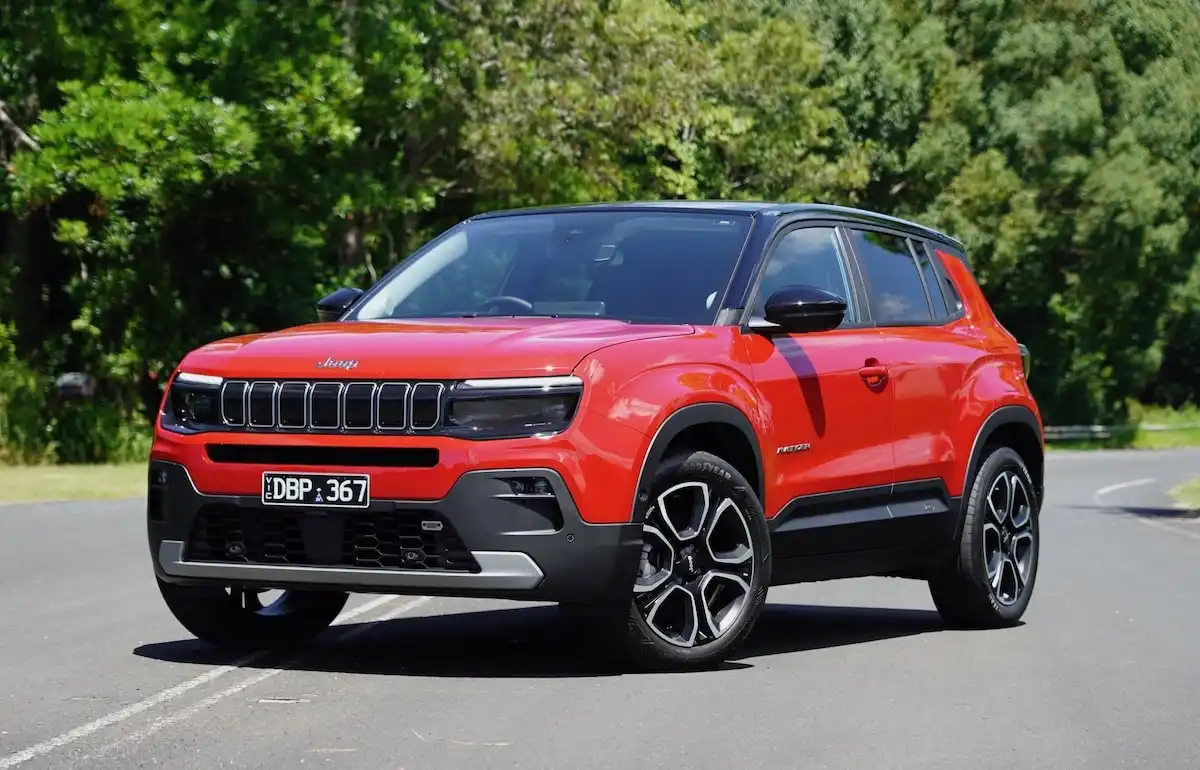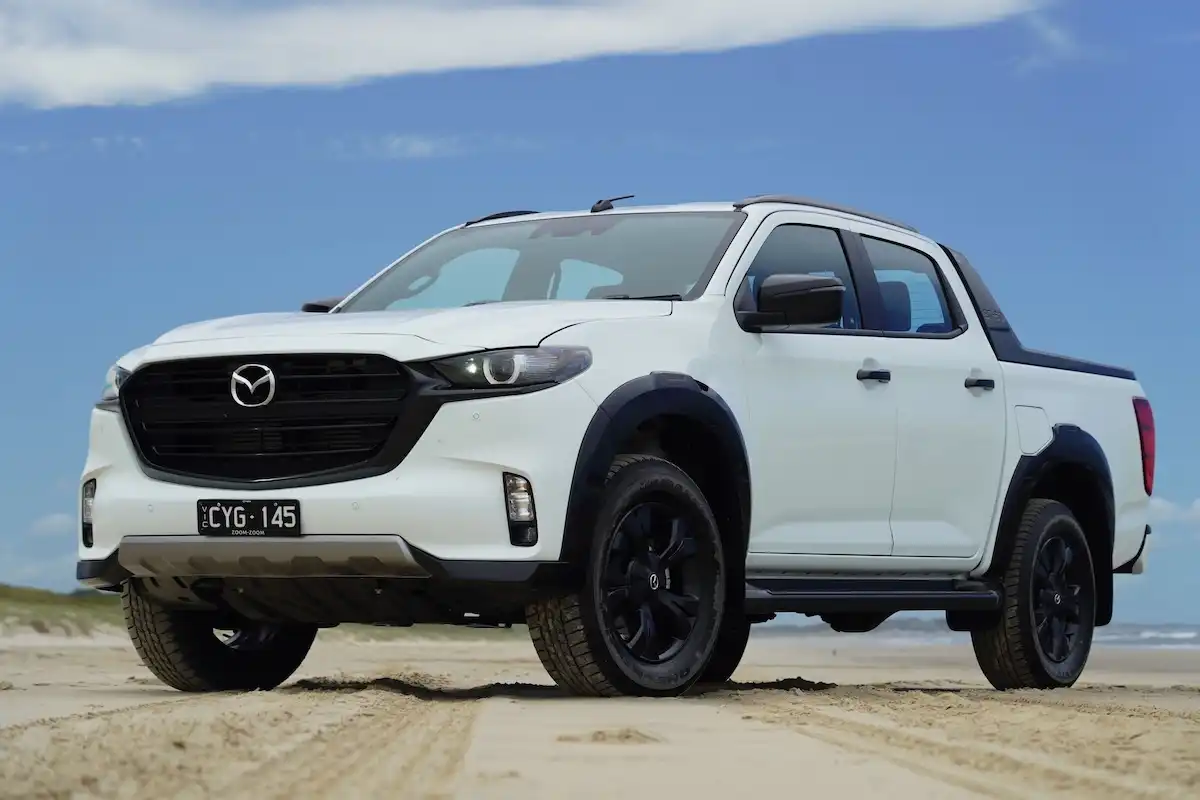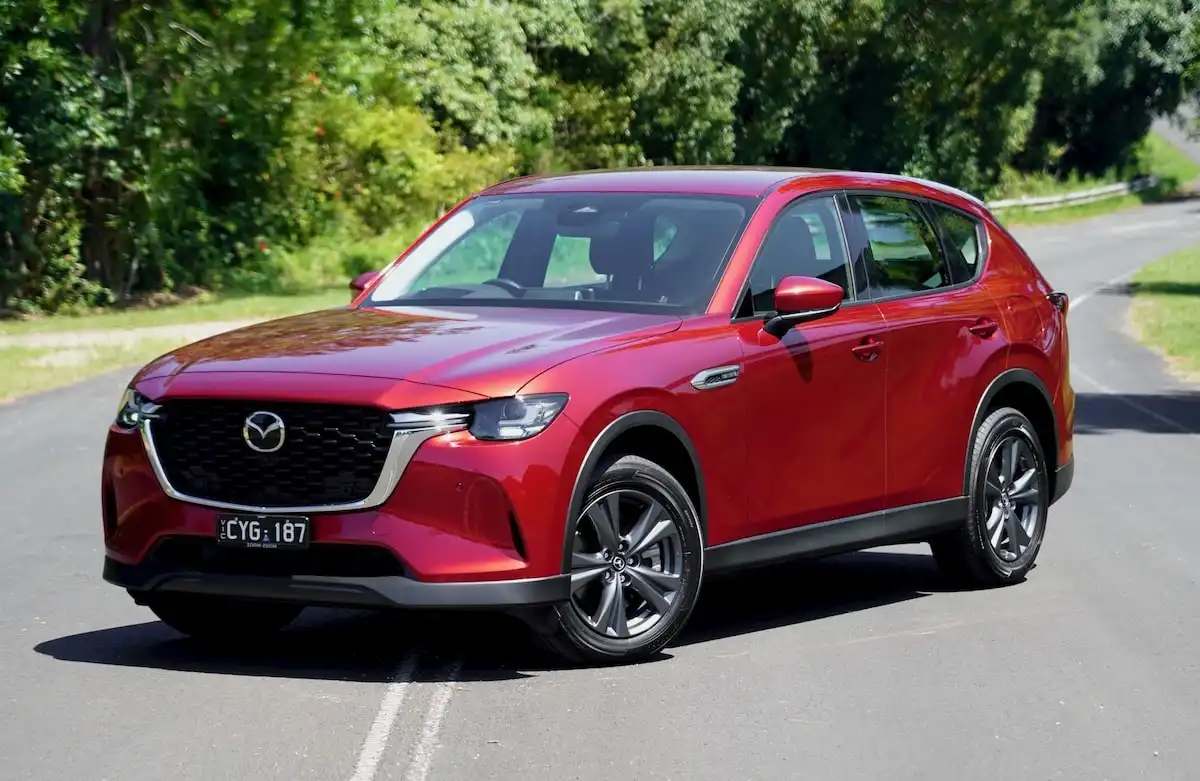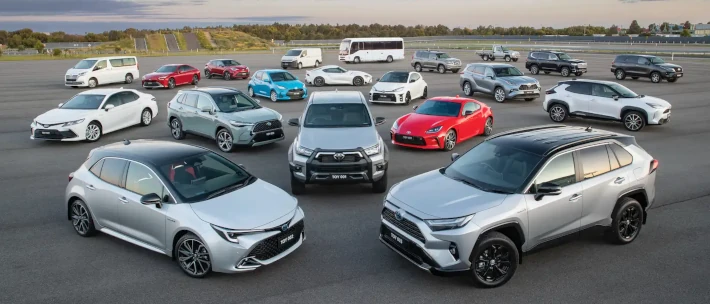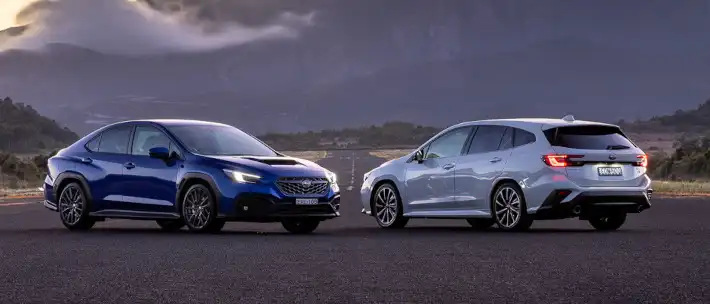How? Well, as the competition heats up, Ford and Toyota are constantly reaching into their bags to find a way to out-do the other and impress potential buyers. The even better news is that Toyota recently gave the Hilux range an update, with new engines, safety technology and comfort on offer. The question is, has the recent update been enough to take the fight to the Ford Ranger?
Let’s find out.
Starting Price: $23,590
OnlineAuto Savings: $4,950
Toyota Hilux - WORKMATE (4x4) Specifications
| Model Date | 2021 |
| Make | TOYOTA |
| Model | HILUX |
| Series | GUN125R FACELIFT |
| Variant | WORKMATE (4x4) |
| Body | DOUBLE CAB P/UP |
| Fuel type | DIESEL |
| Transmission | 6 SP MANUAL |
| Drive | 4x4 |
| Engine | DTFI |
| Engine capacity | 2393 |
| Engine configuration | DUAL OVERHEAD CAM / 16 valves |
| Engine RPM | 3400 / 1600 |
| Cylinders | DT4 |
| Torque | 400 |
| KW | 110 |
| Fuel tank size | 80.0 |
| Fuel usage specs | 7.3 / 0.0 |
| CO2 | 191 |
| ANCAP security rating | 5 |
For more details and other variants, check Toyota Hilux car page.
Need help narrowing down your choices?
Get in touch with one of our Car Buying Specialists today
Request a quoteHow Much Does It Cost?
The Toyota Hilux in its cheapest form can be found for just $23,590 for a 4x2 Workmate singel cab chassis fitted with a manual gearbox, with the automatic priced from $25,590.
The 4x4 Toyota Hilux range starts at $46,790 for the entry-level Workmate with a manual transmission, with an automatic costing an extra $2,000. Workmate is powered by a 2.7-litre petrol engine or 2.4-litre turbo diesel, while the step-up to the SR adds a more powerful 2.8-litre turbo-diesel and increases the towing capacity, and is priced from $50,010. From there, the range moves to the SR5, which is priced at $57,920.
How Much Can OnlineAuto Save You?
Using OnlineAuto’s car buying service, you could save by letting one of our car specialists help you find the best value model for you.
What Features Does the Toyota Hilux Have?
Toyota’s base model Hilux, the Workmate comes with a 4x4 system, 16-inch steel wheels, air conditioning, 8-inch multimedia system with bluetooth, Apple CarPlay and Android Auto, reverse camera, alarm, 7 airbags, power mirrors, automatic headlights, as well as safety equipment like high-speed active cruise control, pre-collision safety system with pedestrian detection, lane departure alert and road sign assist.
Stepping up to the SR variant adds a larger engine with added towing capacity, 17-inch steel wheels, rear differential lock, side steps, premium fabric seats, and the option of satellite navigation and alloy wheels, while the SR5 receives 18-inch alloys, climate control, sat-nav and DAB radio, automatic LED headlights, privacy glass, front and rear parking sensors, chrome rear bumper and door handles, as well as a stainless steel sports bar.
Range Features:
- 16-inch steel wheels (Workmate)
- 8-inch multimedia system with Apple CarPlay and Android Auto
- Toyota Safety Sense package
- 17-inch steel wheels (SR)
- Rear locking differential (SR and above)
- 18-inch alloy wheels (SR5)
- LED Headlights (SR5)
Toyota Hilux Colours
| Glacier White | Nebula Blue |
| Silver Sky | Graphite |
| Eclipse Black |
Is it Comfortable to Drive?
In terms of how the Hilux drives, Toyota, like any manufacturer of utes, was forced to choose between prioritising comfort or the Hilux’s ability to carry large loads. Toyota opted for the latter, ensuring the Hilux maintains its ability to tow and carry large payloads, but the company has actually improved the suspension in the latest generation Hilux. This means that it is not significantly outdone by competitors like the D-MAX or even the VW Amarok, and the engine noise has been tamed, too, meaning the cabin is more quiet for longer journeys.
All up, Toyota’s improvements to the suspension have brought the Hilux closer than ever before to its competitors in terms of driving dynamics and comfort, but having said that, it doesn’t lead the competition.
Is it a Workhorse?
You bet is it. The Hilux is arguably the most famous workhorse in Australia, and there’s a number of good reasons for it. Namely, Toyota’s build quality and durability means the Hilux can soak up all the punishment you can throw at it without any significant problems.
The base Workmate variant comes with a 122kW engine that is capable of 2,800kg braked towing capacity, while the rest of the lineup’s more powerful 150kW engine offers 3,500kg of towing capacity. The payload capacity is rated at 1260kg for the single cab-chassis, 1150kg for the extra cab-chassis, 1125kg for the dual cab-chassis and around 1000kg for the dual cab ute.
Is it Practical and Spacious?
Depending on which variant you opt for, the space and practicality on offer in the Hilux family ranges from modest to superb for the type of vehicle this is. In its most basic form, the Hilux offers a simple, utilitarian approach to its interior design, with straight-forward packaging brought into the 21st century with that 8-inch display. In more expensive variants, the quality of the interior increases and there’s leather upholstery options for those looking to upgrade the traditional fabric seats. Overall, there’s little to get excited about, but that’s the point - Toyota designed this car to help Australians get their jobs done quickly, and not necessarily in style.
Is it Safe?
Thanks to some technology additions and safety aids, the Toyota Hilux has been awarded ANCAP’s maximum Five Star Rating, and comes packaged with Toyota’s Safety Sense system, even in the base model. This system includes high speed active cruise control with pedestrian detection, lane departure alert and road sign assist, although it’s worth noting that the Hilux lacks features like rear-cross traffic and blind-spot alerts, which are included on cars like the Isuzu D-Max.
Is it Fuel Efficient?
The economy of the Hilux range depends on which engine and body style you opt for. With so many combinations, it’s difficult to give an answer specific to your preferred body style, but we can give you the official ratings for the petrol and diesel line up. The base Workmate’s 2.7-litre petrol engine is rated at 11.1L per 100km, while the diesel engines no doubt offer the best bang for buck when it comes to economy. The 2.8-litre turbo-diesel is officially rated at 7.8L per 100km, meaning that the diesel is no doubt the pick of the bunch.
Our Verdict: Is the Toyota Hilux Worth it?
The Toyota Hilux has earnt itself a reputation as one of Australia’s favourite cars for decades now, and the latest generation not only maintains that reputation, it exceeds expectations. It can very much hold its own in terms of competing with the likes of the Ford Ranger and significantly more expensive VW Amarok, providing exceptional value for money if you know exactly what you’re looking for.
With so many engine and body combinations, it can be a little overwhelming researching the Hilux range, so if you need any help, you can get a free quote and see how much OnlineAuto can save you on your Hilux, or call us on 1300 719 925
Five Specs You Need to Know
- Fuel economy between 7.8L (diesel) and 11.1L per 100km (petrol)
- 2800kg towing capacity for 4x2; 3500kg for 4x4
- 8-inch multimedia system with Apple CarPlay and Android Auto standard
- Six-month/10,000km service intervals
- First four services are capped at $250
Pros
- Huge number of engine + body options
- Safety equipment included in base Workmate
- Suspension upgrades
Cons
- Can’t compete with the refinement of some competitors
- A number of variants lack reverse camera
- Price increases of latest generation
Toyota Hilux Competition
Toyota Hilux |
VS |
Mitsubishi Triton |
| Isuzu D-Max | ||
| Ford Ranger | ||
| Toyota Landcruiser | ||
| Nissan Navara |
